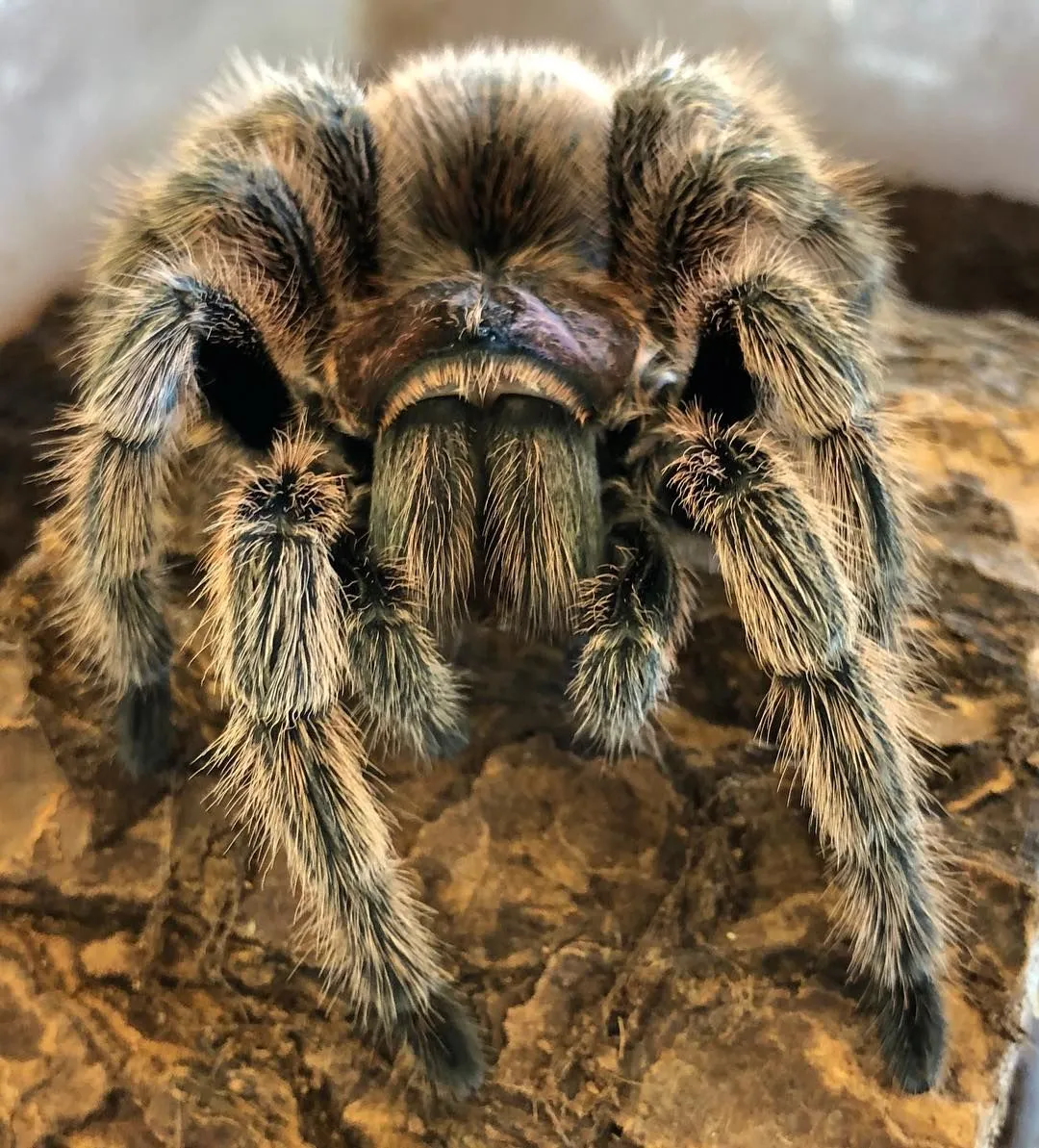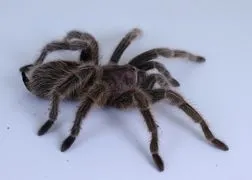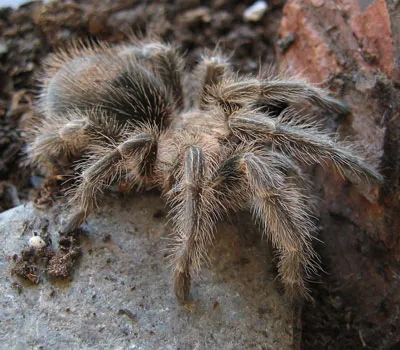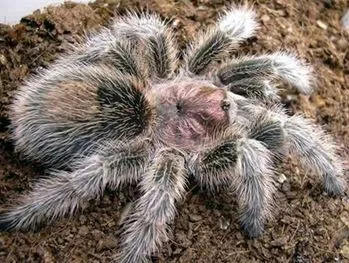Understanding the Rose Hair Tarantula’s Natural Habitat
The Rose Hair Tarantula, scientifically known as Grammostola rosea, originates from the arid and semi-arid regions of South America. Understanding its natural habitat is crucial for providing the best possible care in a captive environment. This spider has adapted to survive in specific conditions, and replicating these conditions as closely as possible is key to ensuring its health, longevity, and overall well-being. Failure to provide a suitable biome can lead to stress, poor health, and even premature death. Therefore, delving into the specifics of its natural environment is the first and most important step in successful Rose Hair Tarantula husbandry.
Geographic Distribution and Climate
Rose Hair Tarantulas are primarily found in the dry scrublands, deserts, and grasslands of countries like Chile, Bolivia, and Argentina. These areas typically experience distinct seasons, with warm, dry summers and milder winters. The climate is characterized by low humidity and significant temperature fluctuations between day and night. The spiders burrow underground to escape the harshest conditions, which helps them regulate their body temperature and conserve moisture. They are well-adapted to these environments, and creating a similar setup in captivity is essential for their survival.
Temperature and Humidity Levels

The ideal temperature range for a Rose Hair Tarantula typically falls between 75°F and 85°F (24°C and 29°C). They can tolerate brief dips below this range, but prolonged exposure to lower temperatures can be detrimental to their health. Humidity levels should be relatively low, usually between 50% and 60%. It’s vital to monitor both temperature and humidity in the enclosure using accurate gauges. Maintaining the correct levels prevents respiratory issues and helps the tarantula to molt successfully. The spider will be much more active and healthy when kept in these conditions.
Microclimates within the Biome
Within their natural habitat, Rose Hair Tarantulas utilize microclimates to regulate their body temperature and conserve moisture. They often burrow into the ground or seek shelter under rocks and logs, where the temperature and humidity are more stable and suitable. In captivity, it’s important to create a similar environment. This can be achieved by providing a substrate that allows burrowing, offering hiding places, and ensuring that the enclosure has areas with slightly different temperatures and humidity levels. Providing a gradient of conditions within the enclosure allows the tarantula to choose the most comfortable spot.
Creating the Perfect Rose Hair Tarantula Enclosure
Setting up the right enclosure is essential for the well-being of your Rose Hair Tarantula. The enclosure should mimic its natural habitat as closely as possible to ensure that your spider thrives. The size, substrate, ventilation, and the addition of hiding places all play a crucial role in establishing a suitable biome. Choosing the right components from the start can prevent many common problems and allow you to enjoy your pet tarantula for many years to come. Setting up the perfect enclosure is a labor of love for the new owner.
Choosing the Right Tank Size

The size of the enclosure should be appropriate for the size of the tarantula. A general rule of thumb is to provide a tank that is at least three times the tarantula’s leg span in width and length. A juvenile Rose Hair Tarantula can thrive in a 5-gallon tank, while a full-grown adult will need a 10- to 20-gallon tank. It’s important to choose a tank that allows for adequate space for movement, burrowing, and the addition of essential elements like a water dish and hiding places. Overcrowding can stress the tarantula and may lead to aggression and other health issues.
Substrate Selection for Optimal Comfort
The substrate is the material that lines the bottom of the enclosure and serves several important functions, including moisture regulation, providing a burrowing medium, and helping to maintain appropriate humidity levels. A good substrate for Rose Hair Tarantulas should be absorbent, non-toxic, and allow for burrowing. A mix of peat moss, coco fiber, and a small amount of vermiculite is a good option. The substrate should be deep enough, typically 4-6 inches, to allow the tarantula to burrow and create a comfortable hideaway. Avoid substrates that are dusty or that could harbor mites or other pests.
Importance of Proper Ventilation
Adequate ventilation is crucial for preventing the buildup of harmful mold and bacteria in the enclosure. Poor ventilation can lead to respiratory problems and other health issues for the tarantula. The enclosure should have ventilation holes or a screen top to allow for air circulation. Avoid placing the enclosure in a drafty area, which could lead to excessive moisture loss. It’s important to strike a balance between adequate ventilation and maintaining the appropriate humidity levels. The airflow will keep the environment clean and healthy for your tarantula.
Essential Elements for a Thriving Biome

Creating a thriving biome for your Rose Hair Tarantula involves more than just the basics. It includes providing a variety of elements that mimic its natural environment and cater to its specific needs. This ensures the tarantula is comfortable, safe, and able to engage in natural behaviors. The right setup will greatly enhance your tarantula’s overall health and happiness and will also make it a more interesting pet to observe. The small details make a big difference when setting up a tarantula habitat.
Providing Adequate Hiding Places
Rose Hair Tarantulas are naturally shy creatures, and they need a safe place to retreat and feel secure. Providing a hiding place is essential for their well-being and helps to reduce stress. Suitable hiding places can include cork bark, half logs, artificial caves, or even a small, overturned pot. The hiding place should be large enough for the tarantula to comfortably fit inside but not so large that it feels exposed. The hiding place should be placed on top of the substrate to allow the spider to burrow underneath it, enhancing the sense of security.
Maintaining Correct Humidity Levels
Maintaining the correct humidity levels is critical for the health of your Rose Hair Tarantula. Low humidity can lead to problems with molting, while excessively high humidity can cause mold and bacterial growth, leading to respiratory issues. Monitor the humidity levels regularly using a hygrometer, and adjust them as needed. Lightly misting the enclosure with dechlorinated water, typically once or twice a week, is usually sufficient to maintain the correct humidity. Ensure the enclosure has proper ventilation to avoid the buildup of excess moisture. The correct humidity levels can be difficult to achieve at first, but you will become familiar with them.
Importance of Cleanliness and Hygiene

Maintaining a clean and hygienic enclosure is paramount for the health and well-being of your Rose Hair Tarantula. Regularly remove any uneaten food, shed exoskeletons, and waste. Spot clean the substrate as needed, and replace it entirely every few months, depending on the size of the enclosure and the number of tarantulas you have. Use a suitable disinfectant to clean the enclosure if necessary. Regular cleaning prevents the buildup of bacteria, mold, and mites. Cleanliness is an important factor in the long-term health of your tarantula.
Feeding and Watering Your Tarantula
Proper feeding and watering are crucial for the health and well-being of your Rose Hair Tarantula. The diet should consist of appropriate insects that provide the necessary nutrients, and the tarantula needs access to fresh water at all times. The tarantula’s diet and water access are equally important for its survival and well-being. The spider may not eat every day, but it should have a water source always available.
Appropriate Food Choices
Rose Hair Tarantulas are primarily insectivores, meaning they feed on insects. Suitable food choices include crickets, mealworms, dubia roaches, and other commercially available feeder insects. The size of the insects should be appropriate for the size of the tarantula. Feed juveniles one or two times a week, and adults every one to two weeks. Avoid feeding wild-caught insects, as they may carry parasites or pesticides. A varied diet will help to ensure that your tarantula receives all the necessary nutrients. The right food choices are an essential part of caring for your tarantula.
Watering Techniques for Hydration

Provide your Rose Hair Tarantula with a shallow water dish filled with fresh, clean water at all times. The water dish should be shallow enough to prevent the tarantula from drowning. Change the water regularly, usually every few days, to prevent the growth of bacteria. For smaller tarantulas, you can provide water by misting the enclosure or using a cotton ball saturated with water. Make sure the water is dechlorinated to avoid harming your tarantula. Hydration is absolutely critical for the tarantula’s survival.
Avoiding Common Mistakes
Several common mistakes can negatively impact the health and well-being of Rose Hair Tarantulas. Understanding and avoiding these mistakes can help ensure that your tarantula thrives in captivity. The most common mistakes involve enclosure setup and maintenance, leading to preventable health problems. These mistakes can be easily avoided by following the guidelines outlined in this article. If you take the time to educate yourself, you will be successful in the long run.
Overcrowding and its Consequences
Overcrowding can lead to stress, aggression, and increased competition for resources. Never house multiple Rose Hair Tarantulas together, except in very rare circumstances, such as mating. Each tarantula needs its own separate enclosure with adequate space, hiding places, and access to food and water. Overcrowding can result in cannibalism and other serious issues. The spider needs its own private space to live.
Ignoring Temperature and Humidity

Ignoring temperature and humidity is one of the most common mistakes that can be made in tarantula care. Extreme temperatures or humidity levels can be fatal. Monitor the temperature and humidity levels regularly, and adjust them as needed to maintain the ideal conditions for your tarantula. Invest in a reliable thermometer and hygrometer to track these crucial environmental factors. Failure to maintain correct temperature and humidity can lead to molting problems and other health issues. Always prioritize the correct environment.
Lack of Hiding Spots
Rose Hair Tarantulas are shy creatures, and they need a place to feel safe and secure. Providing a hiding place is essential for reducing stress and allowing them to feel comfortable in their environment. Without a hiding place, your tarantula may become stressed, leading to a decreased appetite, aggression, and a shortened lifespan. A hiding place can be as simple as a piece of cork bark or an overturned pot. The spider will be much healthier if it has a safe space to retreat to whenever it feels threatened. Provide this for the benefit of your tarantula.
Monitoring and Adjusting the Biome
Successfully maintaining a Rose Hair Tarantula biome is an ongoing process that requires regular monitoring and adjustments. Continuously observing your tarantula’s behavior and the conditions within its enclosure will help you to identify any issues and make necessary modifications to ensure its health and happiness. Be proactive in your care. By taking a proactive approach, you will be able to adjust the environment as needed.
Regular Checks for Health and Well-being
Perform regular checks on your Rose Hair Tarantula to monitor its health and well-being. Observe its feeding habits, activity level, and overall appearance. Look for any signs of illness, such as lethargy, loss of appetite, or abnormal behaviors. Check the enclosure for any signs of mold, pests, or other issues. Addressing any concerns promptly can prevent them from escalating into serious problems. Regularly observing your tarantula’s health is a key part of keeping it happy and thriving.
Adjusting the Biome Based on Tarantula Behavior
Pay close attention to your Rose Hair Tarantula’s behavior, as it can provide valuable insights into its needs. If your tarantula is spending all its time hiding, it may be stressed, and you may need to adjust the enclosure to provide more security. If it’s constantly trying to escape, it may be an indication that the enclosure is not suitable. If your tarantula is refusing to eat, it could be a sign of illness or stress, or a need to vary its diet. Make adjustments to the biome based on your tarantula’s behavior. This will greatly help you to keep your spider healthy and comfortable.
